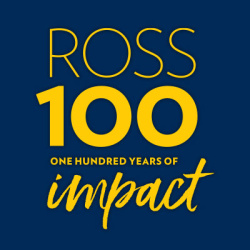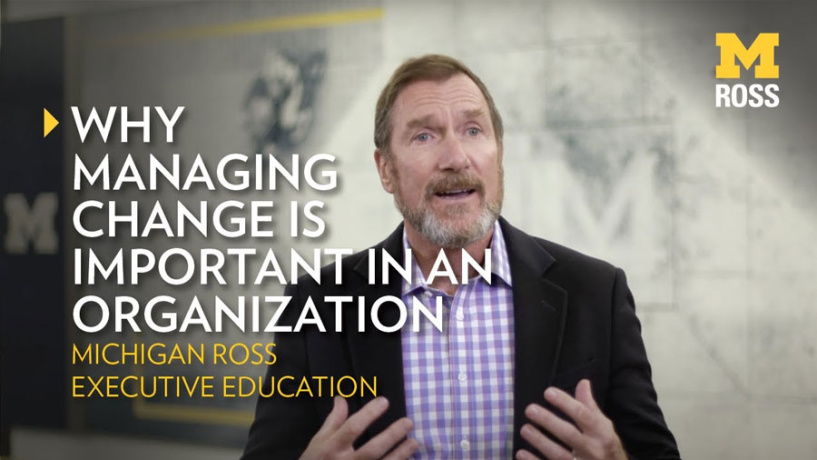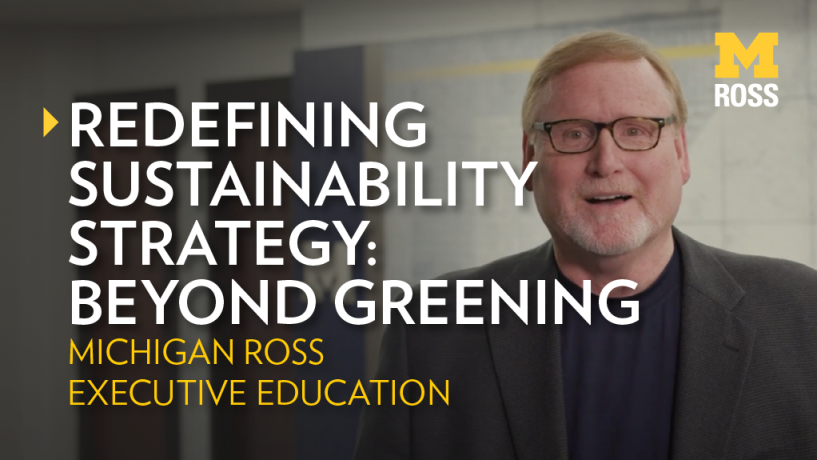Understanding Drivers of Value Creation as Part of the Managerial Mindset

Generating value while navigating economic uncertainty has been at the top of mind for business leaders today amidst an increasingly competitive business landscape, an evolving workforce, and rapid technological advancements.
Managers are faced with the continuous challenge of discovering new but, more importantly, sustainable ways to create value for their customers, employees, partners, and other stakeholders. But at its core, what does it really mean to create economic value? When asking executive learners in executive education programs at Michigan Ross a similar question, “Where does economic value come from,” the most commonly heard answers typically center around future cash flows. While this is an acceptable answer in theory, that an organization’s economic value is the present value of all the future cash flow streams it may generate, it begs the additional question: where do future cash flows come from? Future cash flow is often the outcome of a value-generating activity, but not necessarily the driver of it.
There are three critical drivers to understand when thinking about value creation, and these three drivers must also work harmoniously and move along together. The first driver is growth. Many organizations are in a constant state of seeking some form of growth, whether it be growth in sales, growth in employees, or growth in products or services offered. But growth in and of itself is only sometimes enough to generate value and, in some instances, may even negatively impact value. Consider a food chain that continues to grow its number of locations to the point of too many restaurants in close distance to each other, potentially harming value. This idea indicates that growth should be profitable, leading to the second driver of value creation: profitability. For a firm to grow profitably, it must continuously and strategically invest in the right opportunities, projects, people, and skill sets, with all investments also needing to be considered improvements from what a firm already has. This necessary state of continuous investment and improvement presents a significant challenge, especially for organizations lacking sufficient funds to grow. Another factor to consider when it comes to growth is that often, with growth comes uncertainty, which leads to the third driver of value creation: risk. Risk impounds the uncertainty in the value creation process because the future beholds uncertainty. If a firm is engaging in a more risky growth strategy, it makes the future cash flows much more uncertain. Together, these three drivers essentially mean that value creation is growing profitably while managing risk, and this idea comes with a set of implications for managers to be mindful of when defining value creation goals.
Growth Implications
When it comes to growth, there lies a key high-level question: how much can be learned from current growth in order to predict future growth? Academic studies looking at a variety of companies in the US have found an interesting empirical pattern of growth to consider when addressing this question. Over time, high levels and low levels of growth quickly and strongly mean revert to an average level, as highlighted in Figure 1 below using the percentage of sales growth as an example, with each line representing a different firm.
Figure 1

This observed pattern implies that abnormal growth dissipates quickly and that strong growth observed in recent years should not be considered sustainable levels of growth. So when managers and leadership teams are thinking about growth as a value-creation driver, it is long-term, sustainable growth that should be the priority and target.
It is important to note that while the example graph above considered US companies, the mean-reversion trend of growth is a globally observed phenomenon, and the degree of its appearance largely depends on the competitive nature of a country’s market. In the US, where competition is more open, the mean-reversion pattern tends to appear more quickly. In countries where competition is not as open and with more market entry barriers, the pattern will appear to a lesser extent.
Profitability Implications
The same academic studies mentioned above also analyzed profitability using income/book value, one type of profitability measurement, and found that while there is some mean reversion, it is less apparent than the observed pattern in growth, as seen in Figure 2 below.
Figure 2

Also seen in the pattern of profitability is that the lines never cross paths with one another. This observation indicates that while there is some mean reversion in profitability, relative performance tends to persist longer over time, meaning that a highly profitable firm today will likely remain a highly profitable firm ten years in the future and suggests a strong link between knowledge (a managerial skillset) and delivering consistent profitability.
Value Creation is an Ongoing Journey
With these implications considered, goals of achieving growth or profitability can often be too abstract enough to be deemed tangible goals to target, and there are two additional critical components that follow in the value creation process. After defining the goals and drivers of value creation, managers should ask themselves, “How will we make the operational and financial decisions to ensure value creation?” The answer should come from a defined set of decision-making criteria that can be applied when making various everyday decisions on how and where the firm wants to grow. Once managers have equipped themselves with applicable decision criteria to ideally help the firm get closer to the defined goals, the other question for managers to consider is, “Are we on track?” When so many decisions are made on a daily basis across an organization, it is vital to have processes in place to help evaluate these decisions. Analytical tools like a scorecard can help to ensure the organization is staying on track throughout the value-creation process.
The value creation process is an ongoing journey that requires critical analytical thinking tools and is just the first step to building the managerial mindset needed by all managers in order to thrive in today’s ever-evolving business world. For managers seeking a deeper understanding of analytical thinking skills and other critical skills needed to master a holistic managerial mindset, join me and other Michigan Ross experts for a comprehensive 6-month online journey and apply for the Accelerated Management Development Certificate Program.










